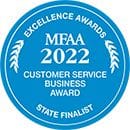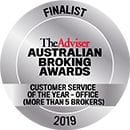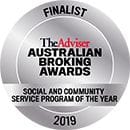Everything you need to know about rentvesting!
)
Rentvesting has become increasingly popular in recent times. Last year, research from the Property Investment Professionals of Australia (PIPA) found that one third of first-time buyers opted to become 'rentvestors', rather than homeowners.
Here's what you need to know before deciding whether rentvesting is right for you. But first, let's look at an age-old question.
To rent or buy?
If you're wondering whether it's cheaper to rent or buy, the answer depends on where you buy and your individual financial situation.
Domain Group compared weekly mortgage repayments on a median sale price to median rent for both houses and units in the year to April. The research found that in many capital city suburbs, rents were higher than mortgages (find out where it's cheaper to buy a property than rent).
But what if you didn't have to choose between renting and buying. What if you could have the best of both worlds?
What is rentvesting
Rentvesting is where you rent where you want to live and buy where you can afford. Simple as that.
Pros
A leg up on the property ladder.
If, like most first-time buyers, you can't afford your dream home straight away, rentvesting gives you options. It allows you to get started in the property market with a smaller deposit and work towards buying the home you want, or to build your investment portfolio.
Lifestyle perks
Want to live in a trendy neighbourhood that's out of your price range? With rentvesting, you can. Live the lifestyle you want, and invest elsewhere.
Flexibility
Renting gives you increased flexibility to move around if your circumstances change.
Tax benefits
What's really great about owning an investment property are the tax perks. Most of the property expenses can be offset against your income.
Cons
No FHOG
If you decide to buy an investment property rather than a home, you won't be entitled to the First Home Owner Grant and stamp duty exemptions or concessions. These are for first time owner-occupiers.
Added responsibility
Being a renter and a landlord at the same time means you'll have multiple expenses to cover. In addition to paying your rent, you'll have costs including council rates, body corporate (if applicable), property management fees, maintenance, other running costs, and of course, your mortgage repayments. Keep in mind that if your investment is tenanted, the rental return may cover some, if not all, of these expenses.
You won't own your home
Renting means you won't be able to make the property your own. You also won't have control over how long you can stay. Leases usually tend to be 6 or 12 months, so you may end up having to move regularly.
Capital Gains Tax
If your investment goes up in value, you may be subject to Capital Gains Tax when you decide to sell.
Steps for purchasing your first investment property
Step 1: Talk to us about what you can comfortably afford and get pre-approval on your finance.
Step 2: Formulate your investment strategy.
Step 3: Create a purchasing budget, factoring in all the costs associated with owning an investment property.
Step 4: Do your research (for things like capital growth potential and rental yield).
Step 5: Once you find a property, organise building and pest inspections.
Step 6: Get us to finalise your investment loan.
Like to know more?
If you think rentvesting is right for you, we can help you explore your finance options. We'll hook you up with a competitive investment loan that's right for your needs. To discuss your options further, call us on 1300 780 440 or email customerservice@financepath.com.au
) Author:Chris Collard
Author:Chris Collard| Tags:SuccessPropertyreal estateRentvestingBuilding Wealth |










